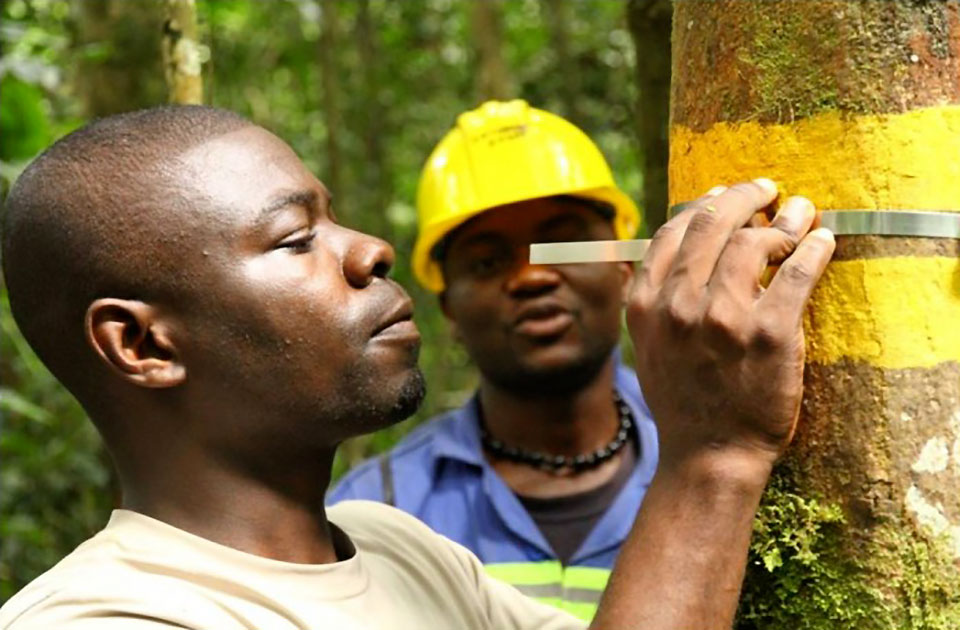The first plot, installed in M’Baïki, Central African Republic, in 1982, was the subject of extensive data collection. To date, nearly fifteen plots have been installed or are being installed in several Congo basin countries in partnership with public and private actors.
In general, two types of plots can be distinguished:
- parcel-type plots
- trail-type plots.
Sometimes these two plot types are combined on the same site, forming a so called complete plot.
Click here to see the distribution of the installed plots.
Parcel-type plots
On DYNAFAC plots, parcels cover an area of 4 to 9 ha. Parcels are subject to periodic and complete inventories of trees with diameters reaching the threshold of 10 cm at 1.3 metres breast height (or DBH).
It allows the quantification of the three processes of population dynamics: growth, recruitment and mortality. Generally, the number of trees present is sufficient to obtain good estimates of these stand-scale dynamics (all trees) but rarely at the population level (all trees belonging to a species and specifically to a commercial species or a species with commercial potential). This is why trails are also required.
Trail-type plots
Trails are networks of trees belonging to a fixed number of species that are linked by paths, and they are regularly monitored. It quantifies two of the population dynamics processes, growth and mortality. It has the advantage of not being limited in the number of individuals as a trail is not finite in size. The other advantage of this type of plot is that installation and monitoring are less expensive than for parcel-type plots.

These plots also allow to carry out genetic studies to assess the impact of exploitation on tree reproduction. This work is carried out using molecular markers to estimate the dispersal distances of seeds, pollen and the inbreeding within tree populations.
Furthermore, phenological studies, which are crucial in determining species’ RFD (Regular Fruiting Diameter), can be carried out with these plots; it is important to know the RFD to fix the minimum cutting diameters (MCD) of the exploited species. Many other scientific works can be carried out within these plots.
To learn more about the methodology and costs of installing and monitoring these plots :
- For the trails: Click here
- For the parcels: Click here


